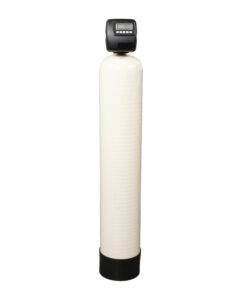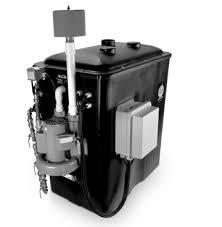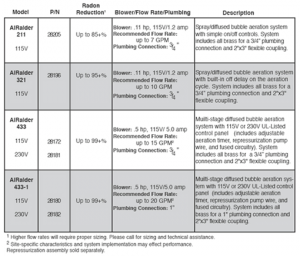IN WELL WATER
Radon is a carcinogen in the air and water, and its affects falls second to cigarettes. Radon is a very common contaminant it is said that 10,000 pcl of radon in water is equivalent to 1 pcl in the air! The benefits of testing for radon in the water are immense.
The best way to treat a well with radon in water is the aeration. Aeration has several options the most common and effective being the diffused bubble.
Diffused Bubble: uses an aeration method that hold the contaminated water, maximizing air to water contact. High pressure filtered air is sent through anti-fouling diffusers that distribute air into the treatment chambers. This process separates the radon from the water, and sends out clean water to the facility. The Radon that is captured in the air is sent out of the facility though piping releasing it where it can dispense away from humans.
Forty eight states have implemented radon action levels, if the radon concentration level is over the state specifications than treatment would be a standard. If your state does not have a specification the EPA suggests using 4000pcl as a action level. This level is not enforced, but is recommended when testing for radon.
Download : AirRaider Brochure
Water Aeration Systems
 AIRaider™ Diffused Bubble Aeration Systems
AIRaider™ Diffused Bubble Aeration Systems
AIRaider systems have been successfully removing radon and other volatile organic compounds (VOCs) from well water for over a decade.
Features:
- 99+% removal of radon gas
- Preferred by professionals
- Compact, patented* design
- Utilizes small diameter vent line (2″)
- Provides multi-stage aeration
- Designed for remote air intake
- Double-wall foam insulated tank (will not sweat)
- All materials meet standards for drinking water use
- Independently tested and proven effective
- Easy to maintain for years of effective performance
Alternative in well Aeration:
Airwell™ radon reductions up to 99%
New technology solves the problem of radon in well water before the water enters your home. Airwell sustains a “down the well” process indefinitely without debilitating scaling and bio-fouling.
A pipe with an aeration section is inserted from top to bottom in the well through the addition of riser pipes. A low voltage compressor delivers air to the active section of the Airwell pipe. This creates a hydrodynamic pressure, causing water from the base of the well to rise through the pipe and be aerated through the active section.
The result: injected air will have stripped previously trapped gasses out of the water in the relatively pressurized conditions at the top of the well.
Air access is restored to the water enabling the ventilation of gases, such as radon and methane, to the atmosphere. The system quickly and reliably removes contaminants.
Granular Activated Carbon (GAC)
Granular activated carbon (GAC) system adsorbs radon and can be used for other volatile organic compounds (VOCs) from well water. In certain instances such as low level, typically suggested for levels under 5,000 Pci/L this type of system may be a consideration. In most cases they are not recommended due to frequent service being required.

The GAC system uses one, or multiple tanks onto which the radon is adsorbed. If used improperly, or if the beds are left installed too long, the carbon may become ineffective and/or may become a source of radioactivity. Fluctuations in radon levels and bio-fouling can cause system failure (less than 80% removal efficiencies) within one year. For this reason, it is required to service GAC systems by changing one or more tanks annually.
Recommended Action Levels for Massachusetts is 10,000 pcl and New Hampshire is 2,000 pcl
Northeast Water Wells, Inc. serving MA & NH since 1966. Call 1-800-562-9355


